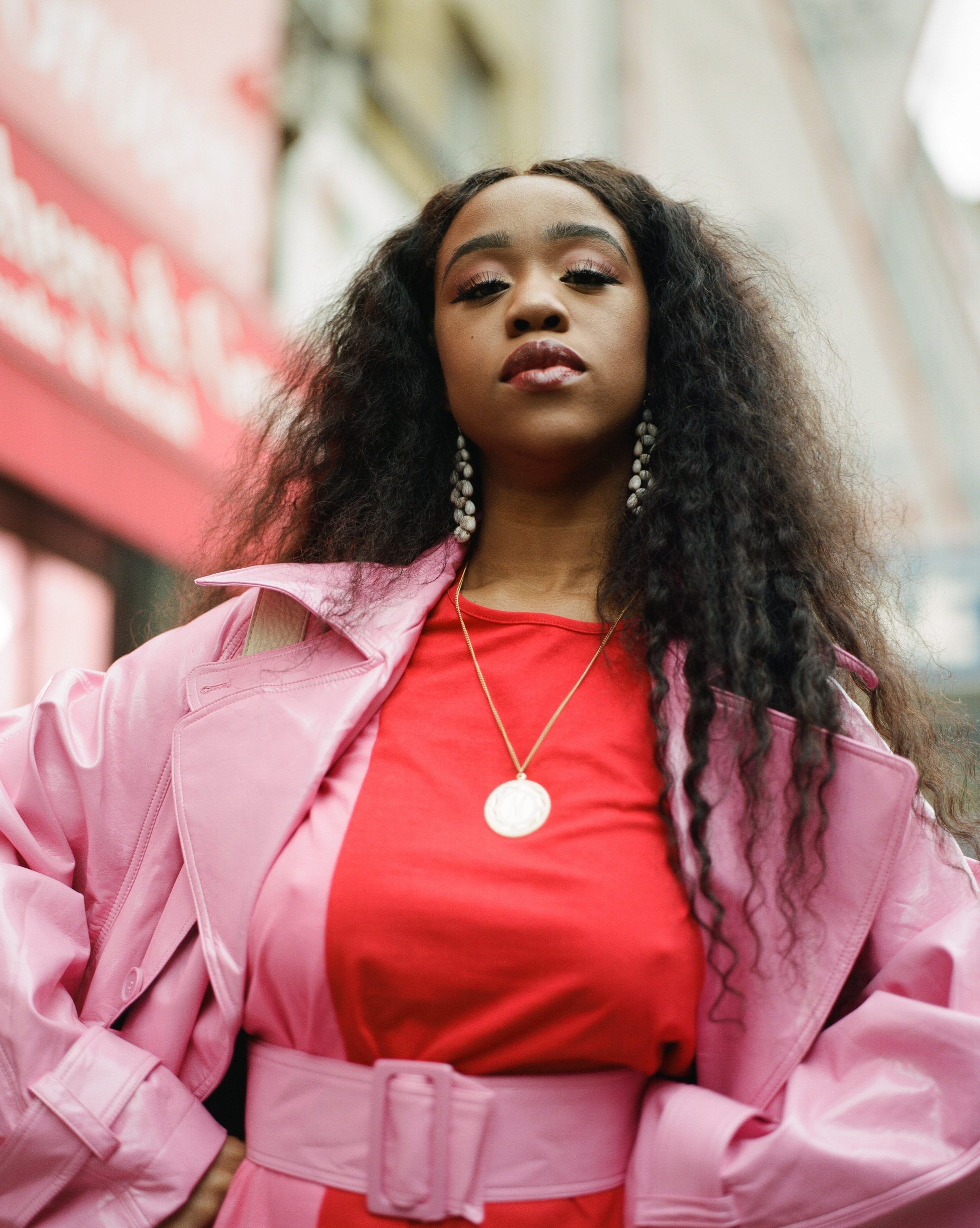Why diversity in publishing matters!
Reni Eddo-Lodge, author of the book ‘Why I’m No Longer Talking To White People About Race’ | Photography by Amaal Said
The latest round in this enduring issue was fought in the balmy heat wave days of the summer of 2018. Lionel Shriver, bestselling author of ‘We Need to Talk About Kevin’ wrote a piece in The Spectator magazine, which amounted to a scathing rebuke of her own publishing house. Shriver thought the huge multinational publishing house was ‘drunk on virtue’ because, in her mind, now any would-be author could make it just because they tick a minority box regardless of their talent.
Shriver outright attacked attempts by her publisher, Penguin Random House, to champion diversity across their output to better reflect the diversity of British society. PRH’s diversity tracker sent to all its authors piqued Shriver’s ire. PRH’s efforts to smash what seems like an unbreakable glass ceiling, has ruffled established feathers of those comfortably nestling on the dusty cushion of bestselling bliss. The author had supposedly ceased to understand what the aims of the company were, if not to produce great writing, that somehow this new drive meant that ‘literary excellence will be secondary to ticking all those ethnicity, gender, disability, sexual preference and crap-education boxes.’
The fact is, the storm over Shriver’s comments is nothing new. Shriver simply reignited an age-old debate that had lost its lustre. PRH distanced themselves from her comments and she was promptly sacked as a judge on the panel of a literary competition. Authors such as Hanif Kureishi quickly rounded on Shriver pointing out the utterly unfounded fear of the ‘dilution of culture’ and of the ‘other’ that the article revealed. Minority writers ‘are still expected to be grateful by those in charge’ for the breaks they receive which, as Shriver seeks to hammer home, are not based on merit alone.
Lack of diversity has remained an open secret over the years, from the offices of commissioning editors filled with a certain stratum of white society, to the books published by largely white authors. Recently publishers in the UK and US have started admitting that as modern businesses in a cosmopolitan society, they lag way behind on representation. A study in 2017 found that in the UK employees in publishing were 90% white, and in the US the figure stood at 78%. Calls have been made for a generational shift, something major that needs to happen for change to come.
Many publishers have been announcing new approaches to tackling this in the past three years in particular. PRH lead with their WriteNow program, a mentoring scheme for writers from underrepresented communities, amongst a host of other initiatives. Hachette’s Changing the Story inclusion programme, which grew out of a 2016 meeting that aimed to making the large multinational publisher a more diverse place to work. In July, Saskia Bewley was hired as Hachette’s first diversity and inclusion manager. HarperCollins’ 12-month rotational traineeships are offered to BAME (Black and Minority Ethnic) candidates. Then there’s the Faber prize for children’s authors specifically targeted at BAME undiscovered writers and illustrators.
Despite an endless roster of schemes, internships and mentorships for the encouragement of a more representative workplace, it is hard to say if anything on the ground has actually changed. Does it simply place more competition in the way of applicants funnelled into such schemes? Positive strategies are undoubtedly vital but there must also be further opportunities and fewer barriers across the structure of organisations as a whole, outside of the BAME pigeonhole.
The problem is particularly acute in children’s publishing, a crucial slice of the publishing pie, which alters and improves the lives and perspectives of future generations. The results of a study by the Centre for Primary Literacy Education carried out on all the children’s books published in 2017, make for sobering reading. The survey specifically looked into BAME representation in UK children’s literature. It found that only 4% of all books published, featured a BAME character and a lowly 1% had a BAME child as the main character. Over half of the books containing a BAME character were defined as ‘contemporary realism,’ taking place in a modern day environment. So not only are the books few and far between but the ones there are, lean towards identity and social issues, further marginalising the children that read them. BAME children should be able to lose themselves in fantasy worlds created by black authors, not have to constantly come up against the realism of a bleak life. These damning figures display the stark reality for representation in children’s books. Sadly, in the more than 9000 books published in 2017 alone an ethnic minority child would struggle to find anything that reflects their story.
It’s not just the UK, as the same concerns crop up in the US. The palpable lack of positive representation, or any representation at all, prompted an eleven-year-old girl called Marley Dias from New Jersey, to speak up. Dias was tired of the books she was made to read at school being all about ‘white boys and their dogs,’ she wanted something for her, that looked like her, that empowered her.
So #1000blackgirlbooks was born. Dias’ campaign would go on to collect and donate 1000 books with a black girl as the main character. The simple fact that a little girl knew something was wrong speaks volumes. The success of her drive to get more books for black girls into schools made publishers sit up and take notice. Dias reached her goal with the help of some of the biggest players in American books, like Barnes and Noble. Hats off to Dias but it seems astonishing that it took a child to point out the flaws in the system.
Despite a challenging environment minority authors continue to fight adversity and their talent flourish and the current upsurge in successes should not be mistaken for a trend. Reni Eddo-Lodge’s ‘Why I’m No Longer Speaking to White People About Race,’ which is a timely clarion call for how to approach racism in British society today, has been a runaway success. The book has smashed all bestseller lists and been described as ‘one of the most important books of 2017.’ Perhaps a few short years ago the publisher Bloomsbury would have considered the book a risk.
Chidera Eggerue (aka The Slumflower), author of ‘What a Time to Be Alone’ | Photography by Vicky Grout
‘Slay in Your Lane,’ ‘Little Black Book’ and ‘What a Time to Be Alone’ are all non-fiction books written by young black women about life, work and health. Each have held their own on the hitlists this year and more will come. ‘Slay in Your Lane’ is a survival guide for young black women in the UK; a book that the authors felt was missing. The book was fought over by no less than nine publishers who all wanted to secure the book for their list. Then there’s The Good Journal, a new crowd-funded literary quarterly set up by Nikesh Shukla. The Barelit literary festival for writers of colour, held its third annual event. Plus there has been a stirring revival of print magazines with projects like Gal-Dem and Plantain Papers leading the way. Good moves are absolutely happening, with the commercial and critical victories speaking for themselves.
Yomi Adegoke and Elizabeth Uviebinené, authors of ‘Slay in Your Lane’
Books by ethnic minority authors about ‘BAME’ issues are not simply for black people. Why should these authors be unduly categorised into writing about identity? Many of the so-called mainstream books that grace an English Literature degree course at a university, studied by students of all backgrounds by white authors, are not considered as for white people but for all. Books with a range of stories should be accessible to all. Underrepresented authors should be able to write whatever stories they want without being confined to a corner of the bookshop or a specialised bit of the curriculum.
Marlon James, author of ‘A Brief History of Seven Killings’
Marlon James (pictured above) won the prestigious Man booker prize in 2015 with his debut novel. ‘A Brief History of Seven Killings’ was rejected 80 times before finally being taken on by One World. James himself has said in a Facebook post that writers of colour spend too much time ‘pandering to white women.’ He makes the point that, as the majority of readers are white women, had he written a story specifically aimed at that demographic he would have been published long before. Choosing his story, a fictional account of a pivotal moment in Bob Marley’s Jamaica, meant striking outside of that canon. It was James’ lack of compromise that paid off. It also illustrates that the small independents like Oneworld and others such as Canongate and Bloomsbury, have embraced diversity without the need for highly publicised specific initiatives.
The well-established cycle of underrepresentation needs to be broken. It starts with the hiring within publishing houses, which leads to less diverse writers being published. Fewer children see themselves in books and less will continue their passion for reading. Those very same children do not see reading as a lifetime, enriching habit or even publishing as a viable career path. The need for diversity in publishing is not just one of morality; it simply makes good business sense. Slowly publishers are catching on to the right thing to do and the power of a young, highly educated section of society who read and are simply not being catered for. Publishing in the UK has a problem with diversity that can no longer be ignored.






